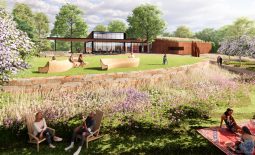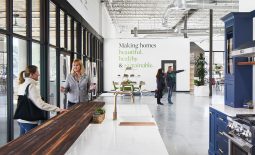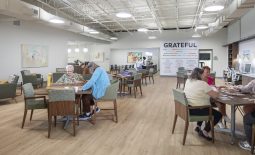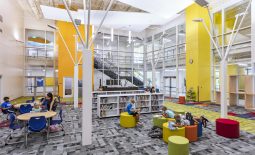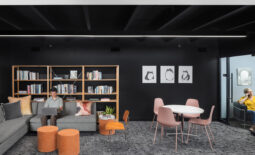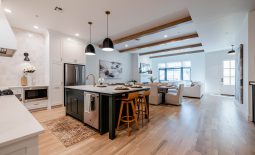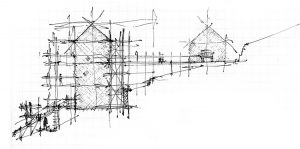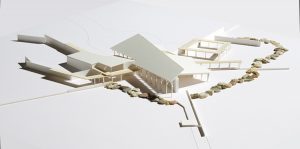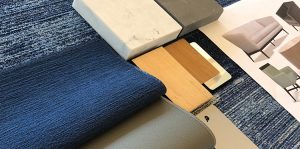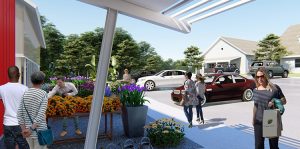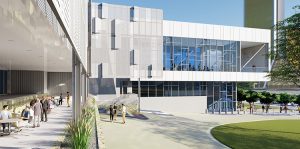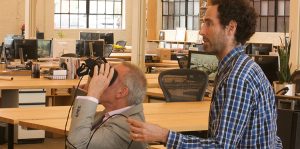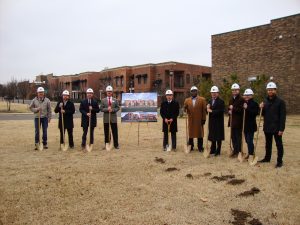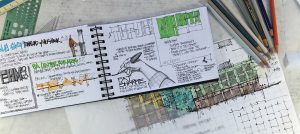Ever evolving technology provides an unprecedented number of ways to visualize and communicate design. A 3D environment enables us to stand in and walk through a space like never before. And it gives our clients the ability to truly participate in the design of their buildings.
But every client and project is different. For some, photorealistic environments can be overwhelming, and the warmth of a marker rendering or the beauty of a watercolor painting is a better way to communicate their story. Below are some of the techniques that we employ to study challenges, create solutions and help our clients and ourselves visualize design.
Hand Sketching
The rush that comes from an exciting new possibility is often best communicated by the hand of an artist. Perhaps on a piece of trace paper, in the conference room at that very first meeting. It really is magic!
Physical Modeling
Sometimes the best way to visualize a big idea is a 3D model that you can hold in your hand. Building physical models is somewhat of a lost art, but sometimes it is the best tool for the job.
3D Drawings | Walkthroughs
Computer-aided visuals that show details with colorful 3D realism enhance the art of storytelling. We can even create a QR (Quick Response) code of your walkthrough so you can share your story with anyone who has a smartphone.
Sample Boards
Computers will never replace our ability to touch and feel. Sample boards allow you to tell us what you think of that particular shade of blue. What about the size, proportion and texture of the floor tile? Or is that the chair you have been dreaming of?
Animations […]
Dream out loud. Emotionally connect influencers. Generate excitement, buy-in and support. We understand the challenges of fundraising. Animations have helped our clients successfully tell a project’s story to their organization, founders and donors alike. We often create QR codes of animations to help our clients more easily share their story.
Photorealistic Renderings
These renderings allow you to encounter and engage with the space before it’s built. Like the example above, they really do look like photographs. And, we have the talent to produce these in-house.
Virtual Reality (VR)
Virtual reality lets you virtually engage with features of the space. Slip on a pair of goggles and explore rooms, the ceiling or just turn in circles. That’s what many of our clients do the first time they try VR. We can create QR codes for these experiences, too. Then there is Augmented Reality (AR). Imagine standing on your site and exploring the project in context. That’s where we’re headed!
Selser Schaefer Architects will let your project’s story unfold in ways that best speak to you, your stakeholders and your budget, all while increasing engagement from your community and supporting any fundraising efforts.

